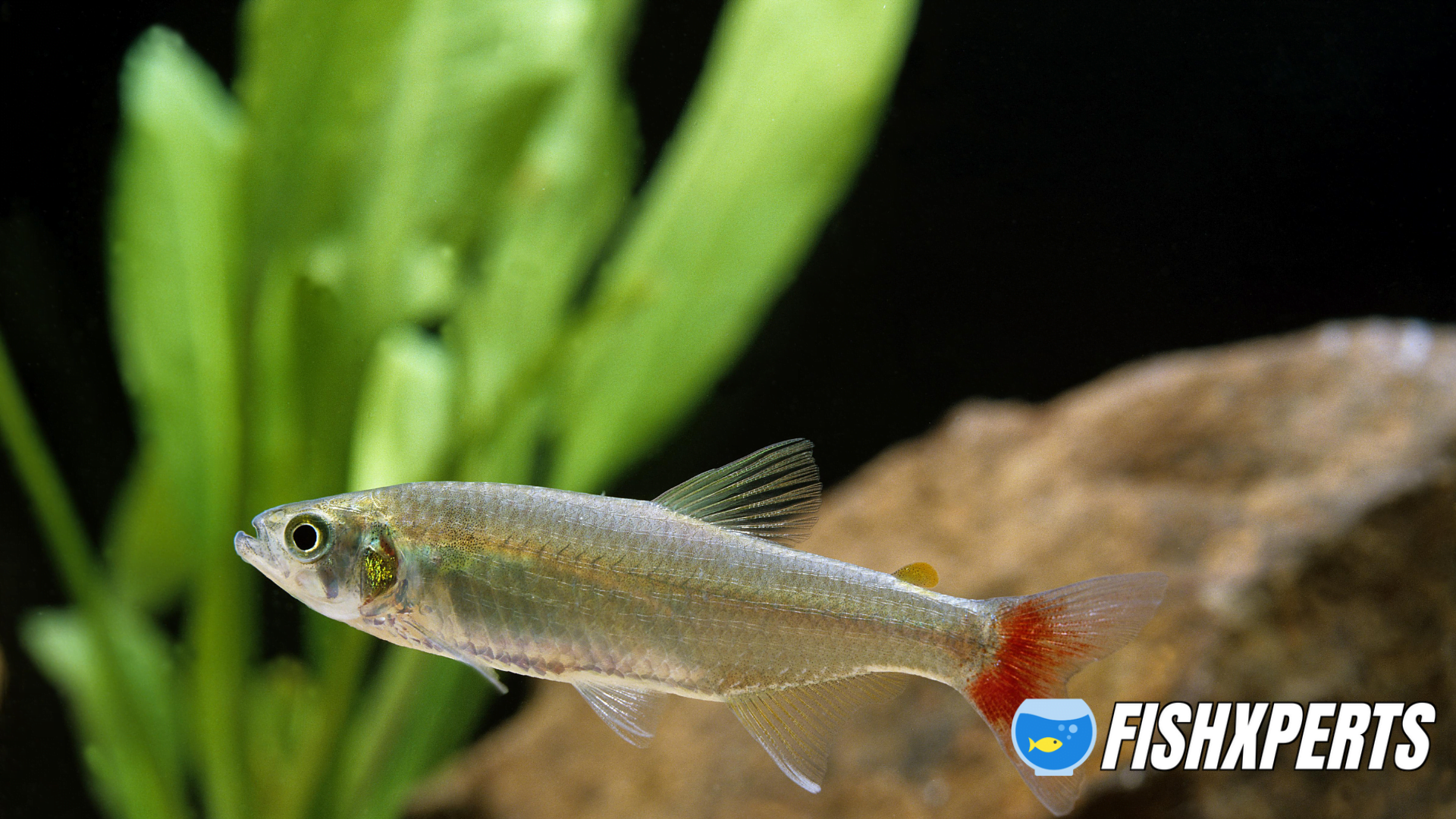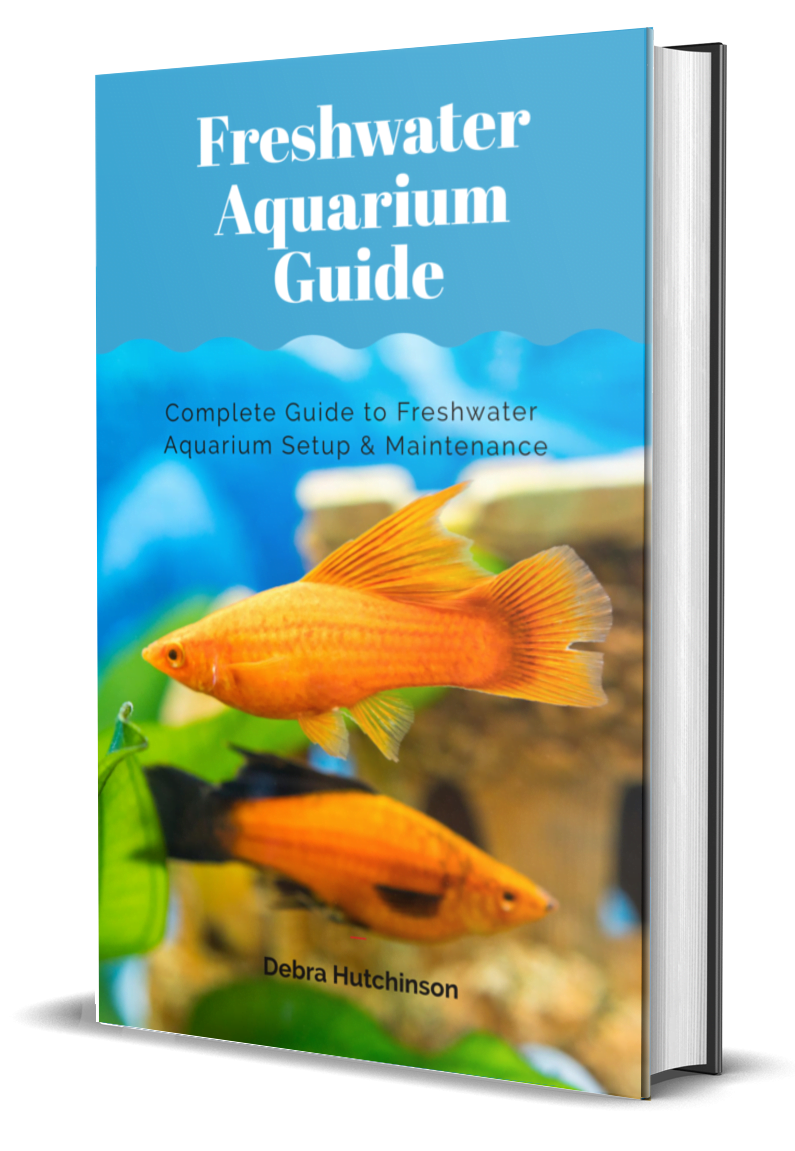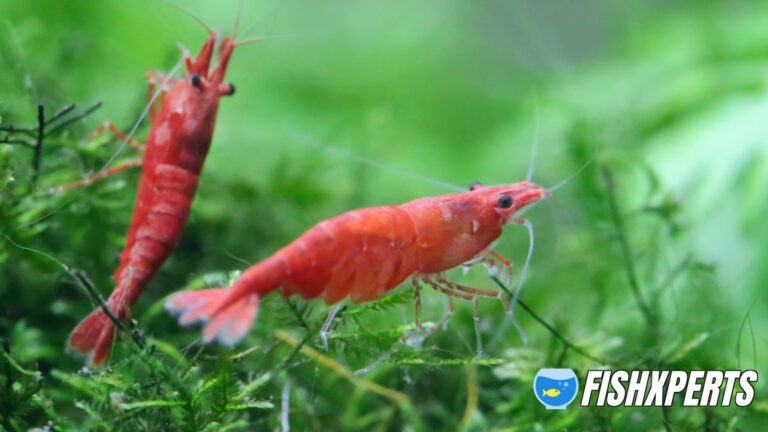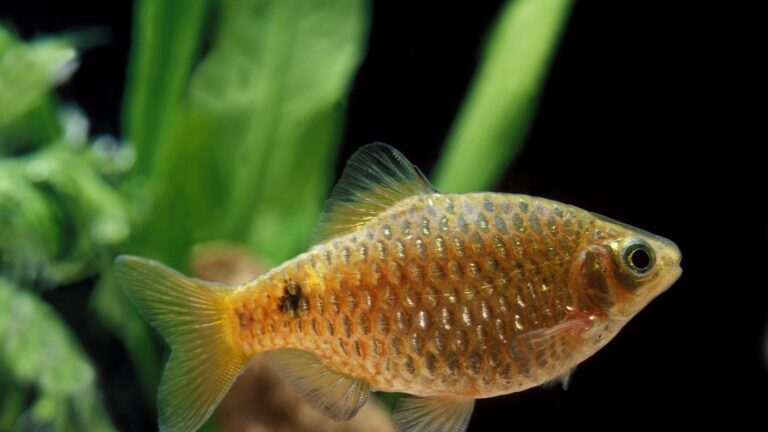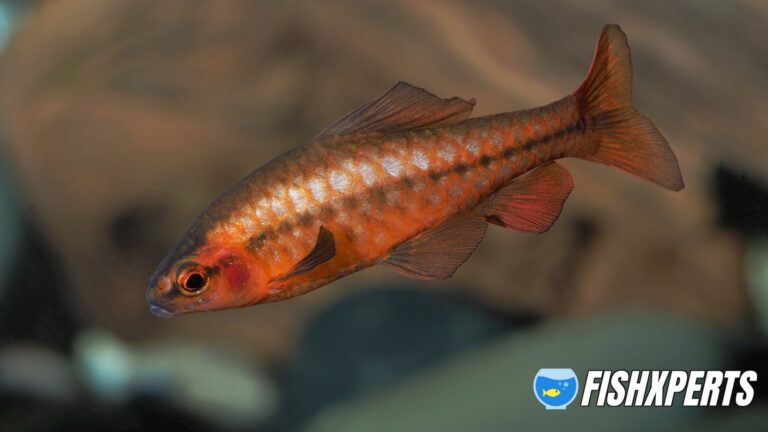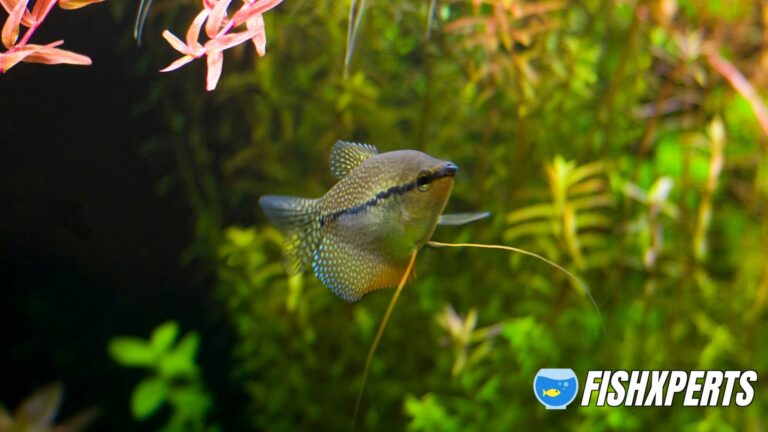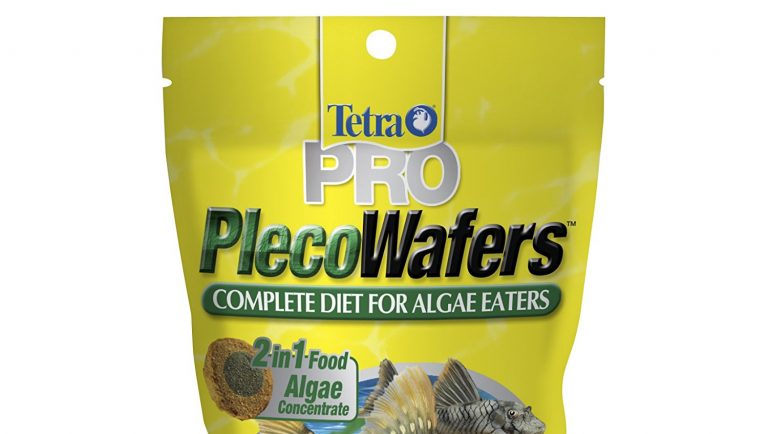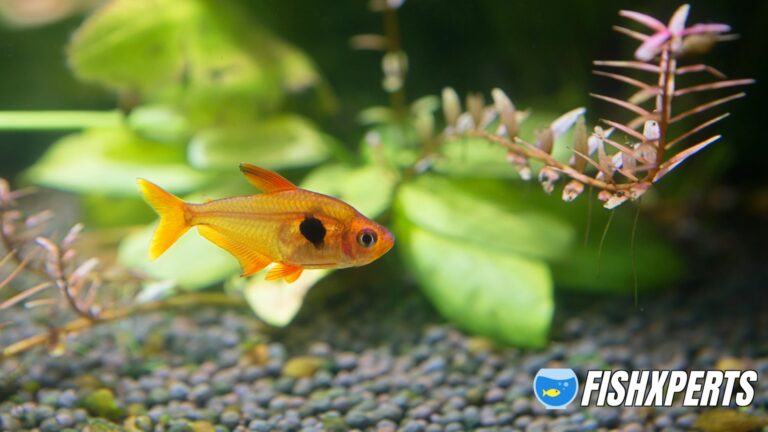The Bloodfin Tetra: Care, Species and Breeding (An Aquarium Guide)
The Bloodfin Tetra (Aphyocharax anisopterus) is a tropical freshwater fish of the characin family (Characidae), native to South America. It is a popular aquarium fish, and its blood-red coloration and relatively small size make it a popular choice for fishkeepers.
The Bloodfin Tetra is a small fish, reaching a maximum size of around 4 cm (1.6 in). It is a peaceful community fish, and can be kept with other small tetras, danios, and rasboras. It is a schooling fish, and does best when kept in groups of 6 or more.
The Bloodfin Tetra is a omnivorous fish, and will accept a wide variety of foods. In the wild, it feeds on small insects, crustaceans, and plant matter. In the aquarium, it will accept most commercial foods, including flakes, pellets, and freeze-dried foods.
The Bloodfin Tetra is a relatively easy fish to care for, and can be a good choice for beginner aquarists. It is tolerant of a wide range of water conditions, and is not particularly sensitive to water quality. However, like all fish, it will do best in an aquarium that is well-maintained and has good water quality.
If you’re looking to add some color and activity to your aquarium, the bloodfin tetra is a great option! These little fish are relatively easy to care for, and will add interest and beauty to your tank. Here are some tips on how to care for bloodfin tetras:
• Provide plenty of hiding places and cover, as bloodfins tend to be shy fish.
• Give them a varied diet of both live and frozen foods.
• Keep them in groups of at least 6-8 fish, as they are social creatures.
With just a little bit of care, your bloodfin tetras will thrive in your aquarium!
Lifespan
The typical lifespan of a bloodfin tetra in captivity is 5–7 years. Some individual fish have been known to live for 10 years or more. In the wild, the fish may have a shorter lifespan due to predation and other environmental factors.
Appearance
The Bloodfin Tetra has an elongated body and is silver in color with black stripes running along its sides. These are peaceful fish and are compatible with other peaceful fish. It is a hardy fish and can live in a variety of water conditions. The Bloodfin Tetra is a omnivore and will eat a variety of foods.
Bloodfin Tetra Care
Size
Bloodfin Tetras typically grow to be about 2-3 inches in length, making them a perfect size for most home aquariums and fish tanks.
Tank Size
These are a schooling fish, so they should be kept in groups of six or more. Bloodfin Tetras prefer a well-planted aquarium with plenty of hiding places. A 20-gallon tank is a good size for a school of Bloodfin Tetras.
Bloodfin Tetras are not demanding when it comes to water conditions. They will do well in a wide range of temperatures (between 72-82 degrees Fahrenheit is ideal), and pH levels between 6.0 and 7.5. They are not particularly fussy eaters, and will accept a variety of foods, including flakes, pellets, and live or frozen foods.
Like all fish, Bloodfin Tetras produce waste that can pollute the water in their tank. A properly sized filter will help to keep the water clean and the Tetras healthy. Regular water changes are also important, and should be done at least once a week.
Water Parameters
Water parameters are the key environmental factors that Aquarists must consider in order to maintain the health of their Bloodfin Tetras. The three most important factors are pH, hardness, and temperature.
pH:
The pH of your aquarium water is critical to the health of your Bloodfin Tetras. A pH that is too high or too low can cause stress and illness. The ideal pH for Bloodfin Tetras is between 6.5 and 7.5.
Hardness:
The hardness of your aquarium water is also important to the health of your Bloodfin Tetras. Hard water is high in minerals and can be tough on their delicate gills. The ideal hardness for Bloodfin Tetras is between 5 and 10 dGH.
Temperature:
The temperature of your aquarium water is also important to the health of your Bloodfin Tetras. Bloodfin Tetras prefer water that is between 75 and 82 degrees Fahrenheit.
Setting Up Their Tank
They prefer a well-planted tank with plenty of hiding places and a dark substrate. Bloodfin Tetras are not particular about water parameters but prefer soft to medium hardness water. A 20-gallon aquarium is a good size for a small group of Bloodfin Tetras.
When setting up their tank, it is important to give them plenty of hiding places. Plants, driftwood, and rocks can all be used to create hiding places. Bloodfin Tetras also like to swim in schools, so a larger tank is better for them. A 20-gallon aquarium is a good size for a small group of Bloodfin Tetras.
It is also important to use a dark substrate in their tank. This will help them feel more comfortable and will make their colors pop. Bloodfin Tetras are not particular about water parameters but prefer soft to medium hardness water.
Disease Potential
The Bloodfin Tetra is a hardy fish that is relatively resistant to disease. However, like all fish, they are susceptible to certain diseases and illnesses. Some of the more common diseases that can affect Bloodfin Tetras include:
Ich: Also known as white spot disease, ich is a parasitic infection that can cause the fish to develop white spots on their body. Ich is highly contagious and can quickly spread among fish in an aquarium.
Finrot: Finrot is a bacterial infection that can cause the fins and tail of a fish to become red and inflamed. Finrot is often the result of poor water quality and can be fatal if left untreated.
Dropsy: Dropsy is a disease that causes the fish to bloat and their scales to protrude. Dropsy is often fatal and is caused by a number of different factors, including bacterial infections, viral infections, and parasites.
Food & Diet
The Bloodfin Tetra is an omnivorous fish, meaning it will eat both plants and animals. In the wild, their diet consists of small insects, crustaceans, and other small invertebrates. In captivity, they can be fed a variety of foods, including live, frozen, or freeze-dried foods, as well as pellets or flakes.
When choosing a food for your Bloodfin Tetra, it is important to choose one that is high in protein and low in carbohydrates. This will help to keep your fish healthy and prevent obesity. live foods are the best option for Bloodfin Tetras, as they are the most natural and nutritious option. However, frozen or freeze-dried foods are also a good option, and can be found at most pet stores.
It is also important to vary your Bloodfin Tetra’s diet, as they can easily become bored with the same food day after day. This can lead to them becoming finicky eaters, and may even cause them to stop eating altogether. Offer them a variety of foods, and be sure to include both plant and animal-based options.
Behavior And Temperament
The bloodfin tetra is a peaceful and shoaling fish that is well-suited for life in a community aquarium. They are active and playful fish that enjoy swimming and exploring their surroundings. Bloodfin tetras are not known to be aggressive or territorial towards other fish.
While bloodfin tetras are peaceful fish, they can be nippy towards slower-moving fish or those with long fins. It is best to keep bloodfin tetras with other peaceful, active fish that are of a similar size.
Bloodfin tetras are relatively easy to care for and make a great addition to any community aquarium. They are hardy fish that are tolerant of a wide range of water conditions. Bloodfin tetras are a great choice for beginner aquarium keepers.
Bloodfin Tetra Tank Mates
As with most fish, the Bloodfin Tetra is best kept with other fish that share similar water conditions and temperament. Although they are a peaceful fish, they can be nippy towards slower moving fish or those with long fins. They are also known to harass other fish that are much smaller than them. For these reasons, it is best to keep them with other peaceful, fast moving fish that are similar in size. Some recommended tank mates for Bloodfin Tetras include:
- Neon Tetras
- Cardinal Tetras
- Pristella Tetras
- Black Skirt Tetras
- White Skirt Tetras
- Silver Tetras
- Penta Tetras
- Serpae Tetras
- Red Eye Tetras
- Lemon Tetras
When choosing tank mates for Bloodfin Tetras, it is important to avoid fish that are known to be aggressive or nippy. It is also important to avoid fish that are much smaller than the Bloodfin Tetra, as they may be harassed or even eaten by them.
Breeding
Like most tetras, Bloodfins are easy to breed in the home aquarium. They are an egg-laying species, and will typically lay their eggs on plants or other surfaces near the surface of the water. After the eggs have been laid, the parents should be removed from the breeding tank to prevent them from eating the eggs.
The eggs will hatch in 24-48 hours, and the fry will be free-swimming a few days after that. They can be fed newly-hatched brine shrimp or other small live foods until they are large enough to eat flakes or pellets.
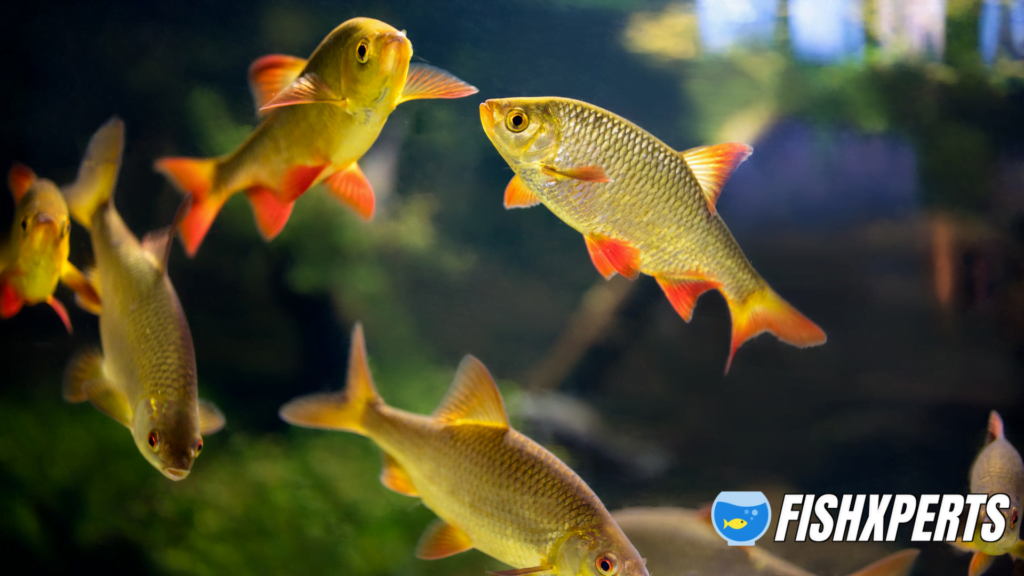
If you want to maximize your chances of success, it is best to set up a dedicated breeding tank for your Bloodfins. This tank should be well-planted, with plenty of hiding places for the fry. A small air-powered sponge filter is all that is needed for filtration.
The water in the breeding tank should be slightly acidic, with a pH of 6.5-7.0. The temperature should be on the cooler side, around 75-78 degrees Fahrenheit.
If all goes well, you should have a nice batch of healthy Bloodfin fry in no time!
Bloodfin Tetra Care – FAQ
How many bloodfin tetras per gallon
Assuming a healthy bloodfin tetra, you can keep anywhere from 2-5 bloodfin tetras per gallon. More importantly, is to have at least 2 gallons per bloodfin tetra. They are a schooling fish, so the more the merrier. A common rule of thumb is 1 gallon of water per inch of fish.
How to tell if bloodfin tetra is pregnant
If you’re wondering if your bloodfin tetra is pregnant, there are a few things you can look for. First, the female bloodfin tetra’s belly will start to swell as she stores eggs. You may also notice that she is eating more than usual.
Another way to tell if your bloodfin tetra is pregnant is to look at her coloration. The female bloodfin tetra’s body will darken as she gets ready to release her eggs. Finally, the female bloodfin tetra’s fins will become longer and more prominent as she prepares to spawn.
Do bloodfin tetras need a heater
As with all tropical fish, bloodfin tetras need a heater to maintain a consistent water temperature. A good rule of thumb is to use a heater that will maintain the water temperature at least 10 degrees above the room temperature. Bloodfin tetras are very sensitive to changes in water temperature, so it is important to have a reliable heater that will keep the water temperature stable.
Can Bloodfin Tetras Live with Bettas?
As Bloodfin Tetras are peaceful fish, they can live with Bettas provided there is enough space. A 20 gallon aquarium is the minimum size recommended for keeping Bloodfin Tetras and Bettas together, with more space being better. Bloodfin Tetras prefer to school in groups of 6 or more, so if keeping them with Bettas, it is best to have a group of 6 or more Bloodfin Tetras.
Can bloodfin tetras live with goldfish?
Bloodfin tetras are a schooling fish, which means they do best when kept in groups of 6 or more. They are also a relatively peaceful fish, so they can be kept with other peaceful fish. Goldfish are not particularly peaceful fish, and they also grow to be much larger than bloodfin tetras, so they are not the best tank mates for bloodfin tetras.
Can Bloodfin Tetras Live with Shrimp?
If you’re looking to add a little variety to your bloodfin tetra aquarium, shrimp make a great addition! These little scavengers are not only fun to watch as they dart around the tank, but they help keep the tank clean by eating algae and uneaten food.
Shrimp are also peaceful creatures that won’t bother the bloodfin tetras. In fact, the bloodfins may even view the shrimp as a food source, so it’s important to make sure there’s plenty of food for everyone.
If you’re considering adding shrimp to your bloodfin tetra aquarium, we recommend getting a few smaller shrimp to start. This will give the bloodfins time to get used to their new tankmates and prevent any potential aggression.
Can Bloodfin Tetras Live With Other Fish?
Bloodfin tetras are peaceful fish that can live with a variety of other fish. They are often kept in community tanks with other peaceful fish such as neon tetras, guppies, and mollies. Bloodfin tetras can also live with larger fish such as angelfish and gouramis, but it is best to avoid keeping them with aggressive fish such as barbs and cichlids.
Are bloodfin tetras good community fish?
Bloodfin tetras are peaceful, schooling fish that make great additions to community tanks. They are active and hardy fish that are relatively easy to care for. Bloodfin tetras are not finicky eaters and will accept a variety of foods.
Bloodfin tetras are a good choice for beginners and experienced aquarium keepers alike. They are relatively hardy fish and can tolerate a wide range of water conditions. Bloodfin tetras are best kept in schools of 6 or more fish. They do well in a variety of tank setups including planted tanks and nano tanks.
While bloodfin tetras are generally peaceful fish, they can be nippy towards slow-moving or long-finned fish. Bloodfin tetras are also known to harass smaller fish and may eat baby fish if given the opportunity. Bloodfin tetras are best kept with other peaceful, schooling fish such as Danios, Rasboras, and Tetras.
Final Thoughts
The Bloodfin Tetra is a beautiful and popular freshwater fish that is perfect for beginner aquarists. They are relatively easy to care for and can live for up to 10 years with proper care. Bloodfin Tetras are peaceful fish that do well in community tanks. They prefer to live in groups of 6 or more and do best when kept with similar sized fish. Bloodfin Tetras are not difficult to breed and make great parents.
Topics Covered

